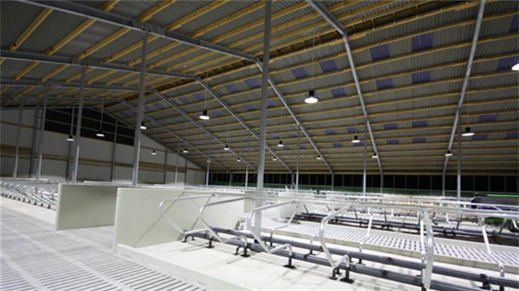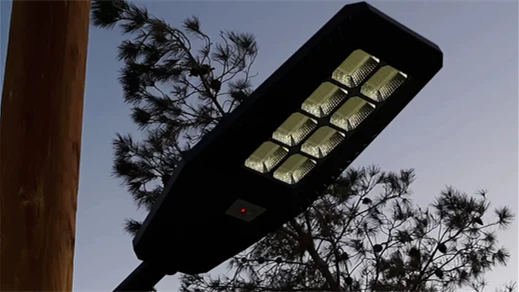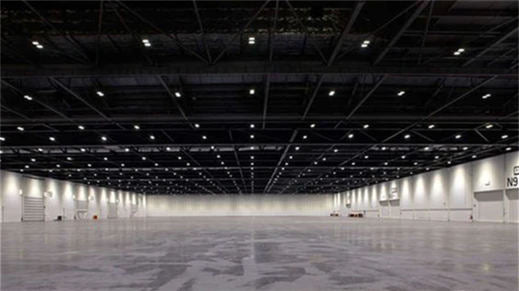When it comes to industrial and commercial lighting solutions, the choice between high bay lights and low bay lights can significantly impact the overall lighting quality and efficiency of a space. While both options serve to illuminate large areas, they are designed for distinct mounting heights and applications. This in-depth comparison will explore the nuanced differences between high bay lights and low bay lights, highlighting their unique features, applications, and advantages to help businesses make informed lighting decisions.
High Bay Lights
High bay lights are specifically engineered for mounting at elevated heights, typically ranging from 20 to 40 feet or more. They are characterized by their high-intensity output, focused beam angles, and superior light distribution, making them ideal for illuminating spaces with tall ceilings and demanding lighting tasks. Here are the key differentiators of high bay lights:
- Mounting Height: High bay lights are designed for use in spaces with mounting heights exceeding 20 feet, such as warehouses, manufacturing facilities, and gymnasiums with high ceilings.
- Focused Illumination: These luminaires typically feature narrow beam angles, often 60 degrees or less, which concentrate light downwards, providing intense illumination over large areas without excessive spillage or glare.
- Uniform Light Distribution: High bay lights offer uniform light distribution, ensuring consistent illumination levels across the entire workspace, even at considerable heights. This uniformity enhances visibility and safety in industrial environments.
- Task Lighting: Due to their high-intensity output and focused beam angles, high bay lights are well-suited for environments where precision tasks or detailed work is performed, such as assembly lines, inspection areas, and loading docks.
- Energy Efficiency: With advancements in LED technology, high bay lights offer exceptional energy efficiency, significantly reducing electricity consumption and operating costs compared to traditional lighting sources. This makes them a sustainable and cost-effective lighting solution for large industrial spaces.
Low Bay Lights
In contrast, low bay lights are designed for mounting at lower heights, typically ranging from 12 to 20 feet. They provide widespread illumination over shorter distances, making them suitable for spaces with lower ceilings or where tasks require more localized lighting. Here are the key differentiators of low bay lights:
- Mounting Height: Low bay lights are intended for use in spaces with mounting heights below 20 feet, such as retail stores, garages, workshops, and indoor sports facilities with lower ceilings.
- Wide Beam Angles: These luminaires often feature wider beam angles, such as 90 degrees or more, which provide broad coverage and ample light distribution across the horizontal plane. This wide coverage enhances visibility and ambiance in commercial and recreational spaces.
- Flexibility in Lighting Design: Low bay lights offer flexibility in lighting design, allowing for customizable layouts and configurations to meet the specific needs of different environments and applications. This flexibility enables designers to adapt the lighting to varying spatial requirements and aesthetic preferences.
- Ambient Lighting: Low bay lights are commonly used for ambient lighting in commercial spaces, creating a welcoming atmosphere and enhancing the visibility of merchandise or work areas. Their widespread illumination enhances the overall ambiance and visual appeal of the space.
- Cost-Effectiveness: While low bay lights may have lower initial costs compared to high bay lights, they may require more fixtures to achieve the same level of illumination in spaces with high ceilings. However, their versatility and flexibility often make them a cost-effective solution for a wide range of indoor environments.
Which One to Choose?
When deciding between high bay lights and low bay lights, it's crucial to consider several factors to ensure the optimal lighting solution for your specific application. Here's a detailed breakdown to guide your decision-making process:
1. Ceiling Height
- High Bay Lights: Opt for high bay lights if your space has ceilings exceeding 20 feet. These luminaires are specifically designed to provide adequate illumination at elevated heights, ensuring optimal visibility and safety in environments such as warehouses and manufacturing facilities.
- Low Bay Lights: Choose low bay lights for spaces with ceilings below 20 feet. These fixtures are better suited for areas where mounting heights are lower, such as retail stores, garages, and workshops.
2. Lighting Requirements
- High Bay Lights: High bay lights are ideal for applications requiring focused and intense illumination, such as detailed assembly work, inspection areas, and loading docks. Their narrow beam angles and uniform light distribution make them suitable for precision tasks performed at considerable heights.
- Low Bay Lights: Low bay lights offer broader coverage and flexibility in lighting design, making them suitable for ambient lighting in retail spaces, general illumination in offices, and task lighting in areas with lower ceilings.
3. Task Specificity
- High Bay Lights: If your workspace involves tasks that demand high levels of accuracy and attention to detail, such as packaging, sorting, or quality control, high bay lights are the preferred choice. Their focused illumination ensures clarity and precision in task execution, enhancing productivity and reducing errors.
- Low Bay Lights: Low bay lights are more versatile and adaptable to various tasks and activities. They provide ambient lighting for retail displays, customer service areas, and general workspaces, creating a welcoming atmosphere while ensuring adequate visibility for day-to-day operations.
4. Energy Efficiency and Cost Considerations
- High Bay Lights: While high bay lights may have higher initial costs, they often offer superior energy efficiency and longer lifespans compared to traditional lighting sources. Investing in energy-efficient LED high bay lights can result in significant long-term savings on electricity bills and maintenance costs.
- Low Bay Lights: Low bay lights typically have lower upfront costs compared to high bay lights. However, it's essential to consider the total cost of ownership, including energy consumption, maintenance, and replacement expenses over the fixture's lifespan.
5. Compliance and Safety Regulations
- High Bay Lights: Ensure that the selected high bay lights comply with relevant safety standards and building codes, especially in industrial environments where worker safety is paramount. High bay luminaires should be rated for durability, ingress protection, and resistance to environmental factors such as dust, moisture, and vibration.
- Low Bay Lights: Similarly, ensure that low bay lights meet safety regulations and lighting requirements for commercial spaces. Pay attention to factors such as glare control, flicker-free operation, and compatibility with dimming controls for enhanced visual comfort and safety.
Conclusion
In conclusion, the decision between high bay lights and low bay lights depends on mounting height, beam angle, task requirements, and cost considerations. High bay lights excel in providing focused illumination for spaces with tall ceilings, while low bay lights offer versatility and broad coverage for environments with lower ceilings. By understanding the distinct characteristics and applications of each lighting solution, businesses can make informed decisions to optimize lighting quality and efficiency in their workplaces.


































Leave a comment
This site is protected by hCaptcha and the hCaptcha Privacy Policy and Terms of Service apply.